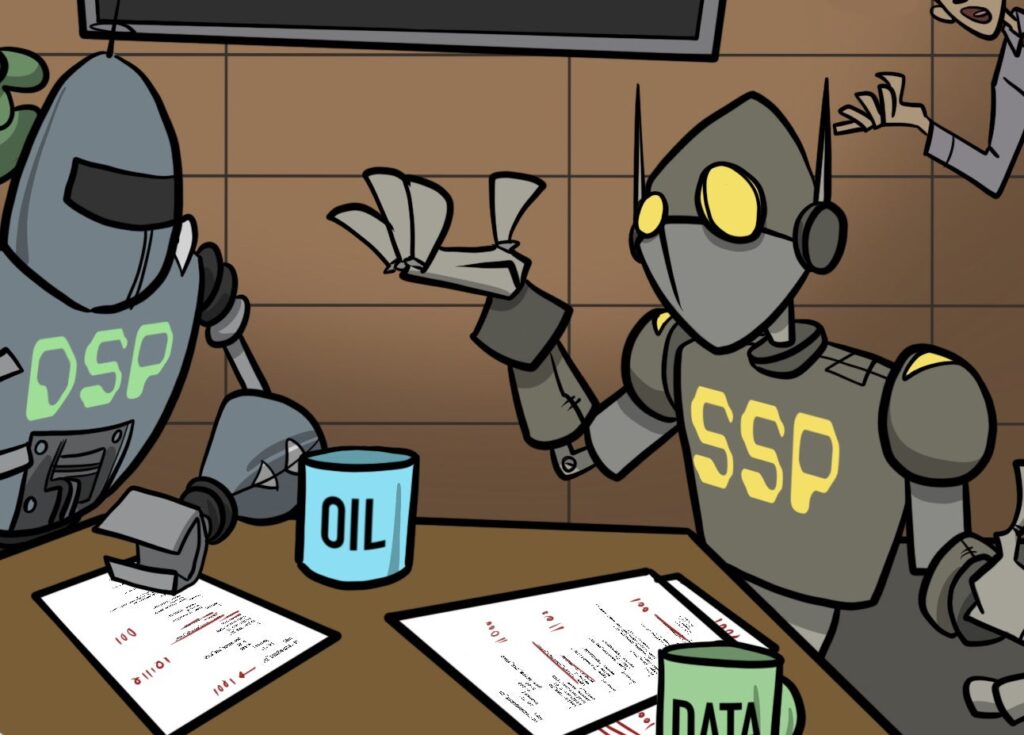I have read Tom Collins’ Makeover Maven in past issues of Direct, and while he’s made some valid points in certain columns, February’s is not one of them.
While Adobe certainly could have used the space to better highlight the new features of its product, the photograph and graphics still make for an interesting metaphor for the need of collaborators in disparate locations to work together effectively. On a single-page ad a picture needs to be worth a thousand words more than ever, because no one has time to read a thousand words about any product, especially an existing one. It’s an ad, not an article.
Now, while Adobe’s ad may be a tad too obscure for its own sake, Tom’s makeover is wrong for this ad’s context—most likely the middle of a trade or graphics magazine. I’ve noticed that Tom is inclined to use too much copy in his makeovers, and people don’t read as much as they did in the past, whether he and I like it or not.
The biggest sin of all is the space wasted on free promos for the companies that use Acrobat. Why would Adobe describe these companies at the expense of ad space that should be used to talk about Acrobat’s new features? Does reading about what Layton Graphics does make Acrobat appear to be a better product?
Instead, why doesn’t Tom find a way to make his points using graphics and brief bits of copy that people can pick up with just a glance? The testimonials may be fine for a brochure, perhaps, but not a single-page ad. On top of that, his makeover is graphically amateurish, with no compelling use of type, and misaligned pictures laying on the page for no particular reason.
To me, Adobe’s ad is directed to existing customers who may not need to give it the close scrutiny Tom says it should warrant. It should say to those users, “A new version of Acrobat has been released. Besides the features you know about and probably use, it now does this, this and this. End of story. Reader makes a note to place an order, turns the page…job done. Any more scrutiny than that, and people are likely to gloss over the ad altogether.
Adobe’s ad also invites interested parties to go to the company Web site. Even the URL (adobe.com/worktogetherbetter) says more with less than all that promotional material for HNTB Corp. and Layton Graphics!
Want testimonials, benefits, specifications? Go to the Web site—that’s why we have Web sites in 2006. In 1976, we didn’t.
Tom’s makeover would have been more relevant for that time.
Phillip D. King
Internet Services Coodinator
Pathmark Stores Inc.
Carteret, NJ
Tom Collins replies: I didn’t feel Adobe’s graphic visually conveyed the software’s ability to enable collaborators in separate locations to work together. It shows collaborators working together in the same building, which is much easier with or without Acrobat than if they’re communicating from different buildings, cities or countries.
It’s been frequently suggested by readers that my makeovers contain too much copy. To me it makes sense for an ad to provide as much useful data about a product or service as can be comfortably included, both for those who don’t need much and for those who do. In this case, the reader who’s already thoroughly familiar with Adobe Acrobat can glance at my ad and pick up what’s new about it at least as easily and quickly as by looking at Adobe’s. But those who want and need to know more will also find it there.
Mr. King says, “Does reading about what Layton Graphics does make Acrobat appear to be a better product?” I am afraid my answer would have to be yes. Layton’s testimonial reporting better customer service and faster access to important data highlights those benefits more impressively and persuasively than the advertiser’s own flat claim ever could.
I’m sure my layout could be improved by many art directors (and made worse by an equal number). But at least my copy is more readable than Acrobat’s, and I believe it would result in measurably more responses from interested prospects.
It’s true that “it’s an ad, not an article.” But I’ve often read a favorable article about a new product or service that made me want to buy it more than the advertising did. I’ll bet Mr. King has too.
Ever wonder why that is?



